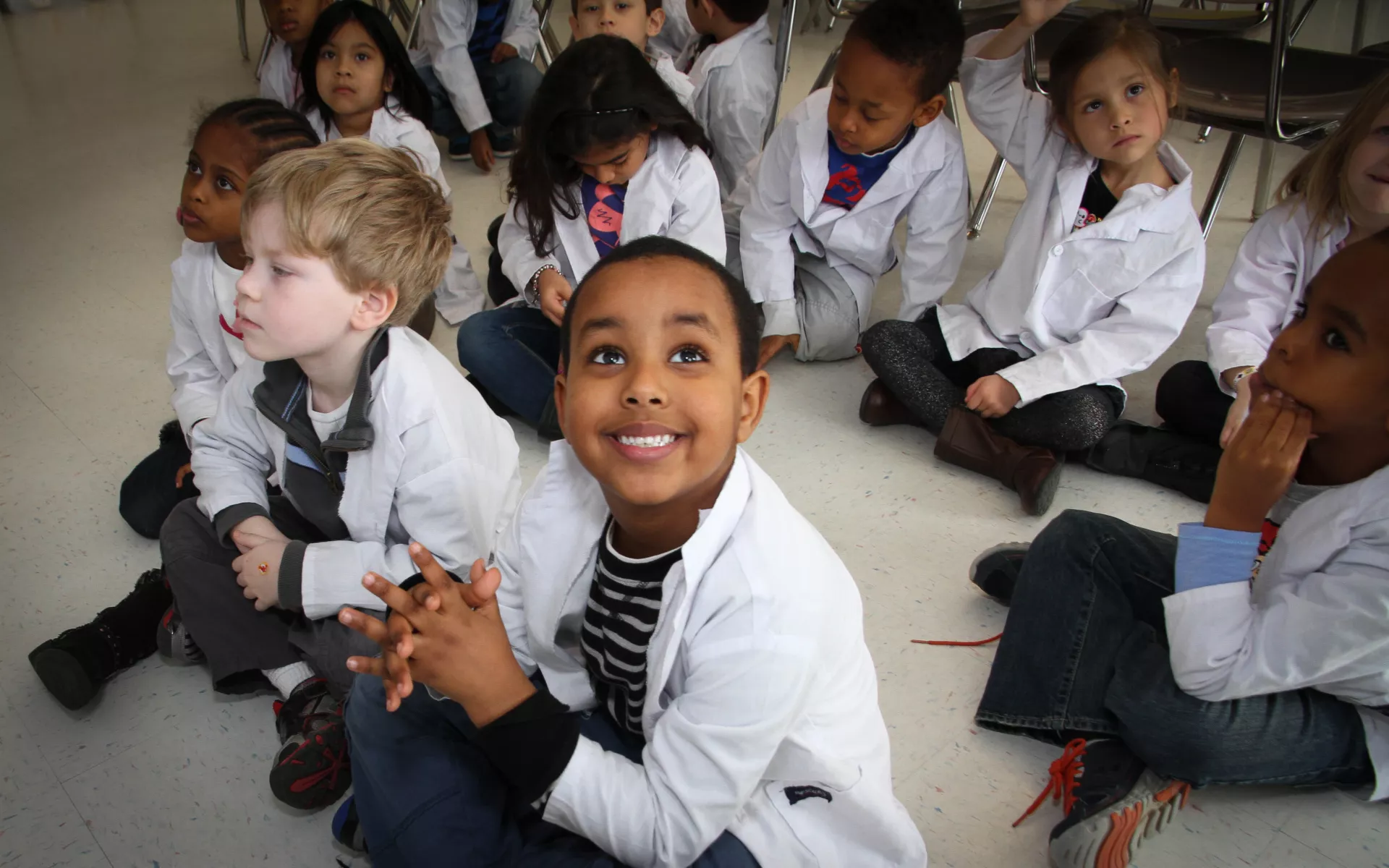Get students engaged for learning on the first day of school.
The start of the year is crucial to the long-term success of your classroom. We organize the room, we lesson plan and we stock up on supplies. But there’s so much more we can do to make sure our young students are set up to succeed.
 As you begin the new academic year, keep the following tips in mind for young students:
As you begin the new academic year, keep the following tips in mind for young students:
Allow Freedom – But Set Expectations Early
Even young children are bored when they’re simply told what to do all the time. Letting them make their own choices—however small—will make them more engaged and excited to learn.
Try allowing your students to choose whether they sit or stand when working at their desks. Let them choose what’s best for their bodies. I allow my students to choose, because they’re still little and their bodies naturally want to move.
This cannot be done, however, without setting clear expectations. Whether they are sitting or standing, two feet must be on the floor. They should also understand that they are expected to actively listen and participate.
Provide Brain and Body Breaks
Young kids are restless. Incorporating lots of breaks—for their bodies and brains—is key to keeping their attention. Taking breaks refreshes students’ brains and keeps them excited to learn more.
In my class, we do lots of moving; we stretch, dance to songs, sing and move around in between lessons.
For a quick mental break, tell your students to visualize colors while breathing. Tell them to inhale a light blue, then exhale a deep purple. Then let your students imagine their own colors blowing and swirling into the classroom.
Deal with Disruption
While movement is extremely important for children, it can also be a distraction. I make sure the extra wiggly students don’t disrupt the rest of the class.
When I set up my classroom, I have group tables in the center of the room with extra work spaces to the side. I put an extra sets of tables in quiet corners of the room that I can see from the general workspace.
If a student is moving too much and distracting their peers, I move them to one of those tables. I’m able to monitor them while they are not in eyesight of their peers, so they can wiggle all they need.
Try The Ice Cube Method
As I said before, starting the year with firm expectations is extremely important. I like to use what we call “the ice cube method” to create structure for my class that will change as the year goes on. For the first week or two, set very rigid expectations and routines. Once the students understand the expectations and know the routine, you can begin to loosen up and become warmer.
As the year goes on, start to incorporate surprise activities—they understand the schedule and can handle something new and different.
As you melt and become warmer, it is easier to build relationships with the students without abandoning classroom expectations. This way, they feel safe and important in the classroom, but don’t feel like you’re just their friend.
By allowing young students freedom while demanding certain expectations, your students will be engaged and excited to learn. Incorporate these tips from the start of the year for a productive and fun class!


